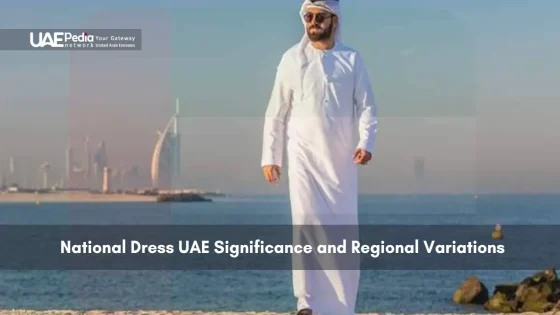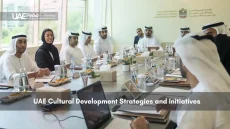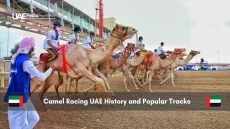How does a land once dotted with humble fishing villages become home to the world’s tallest structure? The answer lies in a design journey that blends ancient wisdom with tomorrow’s vision. Let’s walk through a tale where sun-baked mud walls meet shimmering towers—proof that tradition and innovation can share the same horizon.
Decades ago, communities here built barajeel (wind towers) to cool homes and majlis spaces where stories flowed like Arabic coffee. These techniques weren’t just practical—they whispered the values of resourcefulness and togetherness. Then came bold urban blueprints, like Sheikh Rashid bin Saeed Al Maktoum’s 1960s town plan, which reimagined what a desert city could become.
Today, that vision soars in landmarks like the sail-shaped Burj Al Arab and the record-breaking Burj Khalifa. But look closer: modern glass facades often nod to geometric patterns found in historic forts. Even the sleekest skyscrapers carry echoes of the past.
- Discover how regional materials and Arabian traditions shaped early building methods
- Explore pivotal moments, from wind-cooled homes to gravity-defying towers
- See how cultural identity fuels cutting-edge design across cities
Foundations of Traditional Emirati Design
Imagine living in a desert where every design choice meant survival. Long before glass towers reshaped the skyline, builders here mastered making the impossible possible—turning scorching sands into livable spaces using palm fronds, mud bricks, and ingenuity passed down through generations.
Bedouin Wisdom in Every Brick
Nomadic tribes didn’t just survive the harsh climate—they thrived by adapting. Their portable tents evolved into permanent structures using coral stone and chandal wood. Narrow alleyways? They weren’t just charming—they created shade and funneled breezes. As historic forts show, these designs doubled as defense systems against raiders.
Desert-Proof Engineering
Builders didn’t fight the environment—they collaborated with it. Thick walls insulated interiors, while windtowers (thank our Iranian neighbors for that upgrade!) pulled cool air downward. Even roofs played a role—palm fronds let heat escape while blocking sunlight. These time-tested solutions required zero electricity, just sharp observation of nature’s patterns.
Walk through old neighborhoods today, and you’ll spot modern barajeel-inspired vents in Abu Dhabi’s newest buildings—proof that yesterday’s innovations still shape tomorrow’s skyline.
The Emergence of Modern Design Principles
What happens when ancient patterns meet futuristic materials? The 1960s sparked a design revolution where local needs danced with global trends. Architects began crafting spaces that honored cultural roots while embracing bold, new possibilities.
Influence of Islamic and Persian Elements
You’ll notice geometric star motifs on skyscrapers and mashrabiya-inspired screens shading glass towers. These nods to Islamic art aren’t just decorative—they’re functional storytelling. Take the Dubai World Trade Centre: its hexagonal facade mirrors historic fort designs while housing cutting-edge tech.
Persian arches reappear in shopping malls, reimagined in steel. Architects blend intricate tile patterns with minimalist interiors, creating spaces that feel both timeless and avant-garde.
Innovations in Cooling and Energy Efficiency
Remember those wind towers from old neighborhoods? Modern projects supercharge them. Think double-glazed glass that blocks heat but welcomes light. Automated shades adjust like palm fronds, slashing AC use by 40% in some buildings.
Landmarks like Masdar City prove sustainability can dazzle. Solar-paneled roofs and wind tunnels create microclimates—echoing desert wisdom with 21st-century engineering. One architect quipped, “We’re not fighting the climate anymore; we’re collaborating with it.”
The Evolution of UAE Architecture: Balancing Heritage and Innovation
What if the walls of yesterday could whisper secrets to tomorrow’s skyline? This desert region’s built environment tells a thrilling story—one where sun-baked clay transforms into shimmering glass without losing its soul. Let’s explore how master builders honor ancestral blueprints while reaching for the clouds.
Transition from Mud-Brick Structures to Glass Facades
Walk through Al Fahidi Historical District, and you’ll touch walls made from palm logs and gypsum. Fast-forward to Downtown Dubai, where the Burj Khalifa tower uses reflective cladding to mirror desert hues. Both eras share a common thread: smart adaptation to extreme climates.
Modern projects like the Dubai World Trade Centre prove innovation doesn’t erase history. Its hexagonal patterns echo ancient forts, while solar-responsive glass cuts energy use by 35%. Architects here aren’t just building taller—they’re weaving cultural DNA into every beam.
| Feature | Traditional Methods | Modern Adaptations |
|---|---|---|
| Materials | Mud bricks, palm fronds | Recycled steel, smart glass |
| Cooling | Wind towers | AI-driven ventilation |
| Symbolism | Community gathering spaces | Sky-high landmarks |
The tower has become more than a structure—it’s a metaphor for ambition rooted in heritage. Take Jumeirah Mosque’s minaret-inspired curves reinterpreted in unique adventure experiences in Dubai. Or the Louvre Abu Dhabi, where a geometric dome filters sunlight like traditional mashrabiya screens.
This evolution isn’t about choosing past or future. It’s about crafting places where a grandmother’s stories feel at home in a glass-walled lobby. As one designer put it: “We build upward, but our foundations dig deep.”
Iconic Landmarks in Abu Dhabi and Dubai
Ever wondered where desert traditions meet futuristic ambition? Look no further than the skyline where sand meets steel. These cities have transformed into living galleries—each structure telling stories of heritage while reaching for tomorrow.
Skyscrapers and Global Business Hubs
Towers here don’t just scrape the sky—they redefine it. The Burj Khalifa isn’t just tall; its triple-lobed shape mirrors desert flowers. Business districts like DIFC blend glass towers with open plazas, proving workspaces can inspire awe.
As one architect from a leading firm noted, “We design vertical cities where people thrive, not just work.” Look up in Dubai Marina, and you’ll see clusters of glass giants—each competing to craft the perfect blend of form and function.
Distinctive Cultural Icons
The Sheikh Zayed Grand Mosque stuns with 82 domes and reflective pools—like moonlight carved into marble. Nearby, the Louvre Abu Dhabi’s floating dome rains sunlight, echoing ancient star maps. These spaces aren’t just beautiful; they’re bridges between eras.
Wander their halls, and you’ll feel centuries fold into moments. Intricate floral mosaics meet minimalist galleries—proof that heritage thrives when paired with bold vision.
Innovative Projects
Masdar City whispers the future: solar-powered, car-free, yet rooted in wind-tower cooling. Ferrari World’s red roof mimics a sports car’s curves, housing record-breaking rollercoasters. These aren’t just buildings—they’re experiments in joy and sustainability.
| Landmark | Design Focus | Key Feature |
|---|---|---|
| Sheikh Zayed Mosque | Cultural Heritage | 82 marble domes |
| Burj Khalifa | Modern Engineering | World’s tallest structure |
| Masdar City | Sustainability | Carbon-neutral urban design |
Ready to walk through history and tomorrow? These landmarks don’t just dot the map—they redefine what cities can become.
Sustainable and Culturally-Inspired Projects
What if buildings could cool themselves like desert foxes? Across sun-scorched landscapes, designers are answering this question by merging age-old wisdom with cutting-edge tech. The result? Spaces that honor cultural roots while tackling 21st-century climate challenges head-on.
Environmental Adaptations in Modern Construction
In the desert, every drop of water and breath of air counts. Projects like Masdar City use wind tunnels inspired by ancient alleyways to slash energy use. Solar panels angle like palm fronds, while self-shading facades mimic the way sand dunes protect their bases.
Builders worldwide take notes. Singapore’s vertical gardens and Spain’s water-harvesting plazas influence local designs. One engineer shared: “We’re borrowing nature’s playbook—at a global level.” Even skyscrapers now collect condensation from desert nights, repurposing it for irrigation.
Preserving Traditional Elements in New Developments
Walk into Abu Dhabi’s newest library, and you’ll find courtyards echoing Bedouin gathering spots—but with AI-controlled airflow. Projects here prove sustainability isn’t just about tech. It’s about keeping cultural context alive through design language.
Developers use local gypsum for decorative screens that reduce solar gain by 60%. Rooftop windcatchers double as art installations, their patterns lifted from historic forts. As this analysis shows, blending tradition with innovation creates spaces that feel like home—even when they’re pushing engineering boundaries.
From recycled coral stone facades to community gardens replacing concrete plazas, every choice whispers: “Progress doesn’t erase the past—it reimagines it.”
Urban Transformation and Global Influences
Picture a city where Parisian curves meet Bedouin geometry—where every street corner tells a story of cultural handshakes. This is today’s urban reality across the Emirates, shaped by a dance between global vision and local identity.
When Worlds Collide in Concrete
Globalization didn’t erase traditions here—it gave them new tools. International architects now collaborate with Emirati craftsmen, blending high-tech materials with sadu weaving patterns. Take the Louvre Abu Dhabi: its floating dome nods to French engineering while filtering sunlight like ancient palm-frond roofs.
Walk through Dubai’s Business Bay, and you’ll spot Japanese minimalism in glass towers beside courtyards inspired by Arabian desert camps. Even metro stations fuse futuristic lines with mashrabiya-inspired screens. As one designer put it: “We’re not copying trends—we’re remixing them with local soul.”
This fusion reshapes daily life. Community hubs like Al Seef district mix 19th-century market vibes with pop-up tech galleries. Global firms partner with regional artisans, creating furniture that pairs AI-driven ergonomics with camel leather textures. The result? Spaces that feel both familiar and thrillingly new.
From Rotterdam to Riyadh, cities watch how this country balances heritage with hyper-modernity. As skylines evolve, they whisper a truth: true innovation roots itself in the stories of its people.
Embracing the Future: Visionary Reflections in UAE Architecture
Tomorrow’s blueprints are being sketched today—not on paper, but across smart cities and floating neighborhoods. Urban planners now craft islands of innovation where solar-powered beaches meet AI-managed parks. Take The Heart of Europe development: its climate-controlled streets and rain-making technology turn sci-fi dreams into livable reality.
Forward-thinking plans focus on community as much as tech. Projects like Al Marjan Island blend luxury with sustainability—think coral reef restoration paired with zero-waste resorts. Architects draw attention to designs that adapt as needs shift, like modular towers that grow with neighborhoods.
Curious where to spot these ideas? Explore lists of upcoming developments redefining urban life. The Mars Science City project offers one example, testing habitats for desert living that could shape off-world colonies. Meanwhile, mangrove-lined promenades prove eco-spaces can thrive beside glass skyscrapers.
Today’s breakthroughs aren’t just flashy concepts—they’re stepping stones. As you walk through districts powered by tidal energy or relax in parks cooled by ancient windcatcher principles, remember: every futuristic detail roots itself in lessons from the land. Ready to see where imagination takes us next?
Architects blend wind towers (barajeel) for natural cooling, geometric Islamic patterns in facades, and shaded courtyards into contemporary structures. Projects like Qasr Al Watan in Abu Dhabi reinterpret historic motifs with glass and steel to honor heritage while embracing innovation.
Coral stone, palm fronds, and mud-brick (areesh) dominated pre-oil era construction. These materials provided insulation against extreme heat—a smart desert-responsive approach still inspiring eco-friendly designs today, like Al Bait Sharjah’s restored coral walls.
With scorching summers, innovations like Masdar City’s angled rooftops for shade, Louvre Abu Dhabi’s “rain of light” dome reducing AC use, and solar-integrated towers like The Sustainable City Dubai showcase how modern tech meets ancient climate wisdom.
The Sheikh Zayed Grand Mosque’s marble domes, Etihad Towers’ futuristic curves, and Jean Nouvel’s Louvre Abu Dhabi—with its floating dome mimicking palm groves—blend cultural pride with global ambition. Each structure tells a story of the city’s past and future.
International architects like Norman Foster (Masdar) and Zaha Hadid (Bee’ah Headquarters) collaborate with local firms to merge global styles with regional needs. The result? Skyscrapers with mashrabiya-inspired screens and malls featuring souk-like layouts.
From mangrove-friendly coastal developments to Al Ain’s mud-brick-inspired housing, eco-conscious designs now prioritize renewable energy and native landscaping. Even Dubai’s Museum of the Future uses self-cleaning solar panels—proof that “green” is the new gold standard.
Not entirely! Areas like Al Fahidi in Dubai and Al Jahili Fort in Al Ain are preserved as cultural hubs. Meanwhile, new districts like Saadiyat Island weave heritage into masterplans—think shaded walkways and community majlis spaces in modern apartment complexes.

















